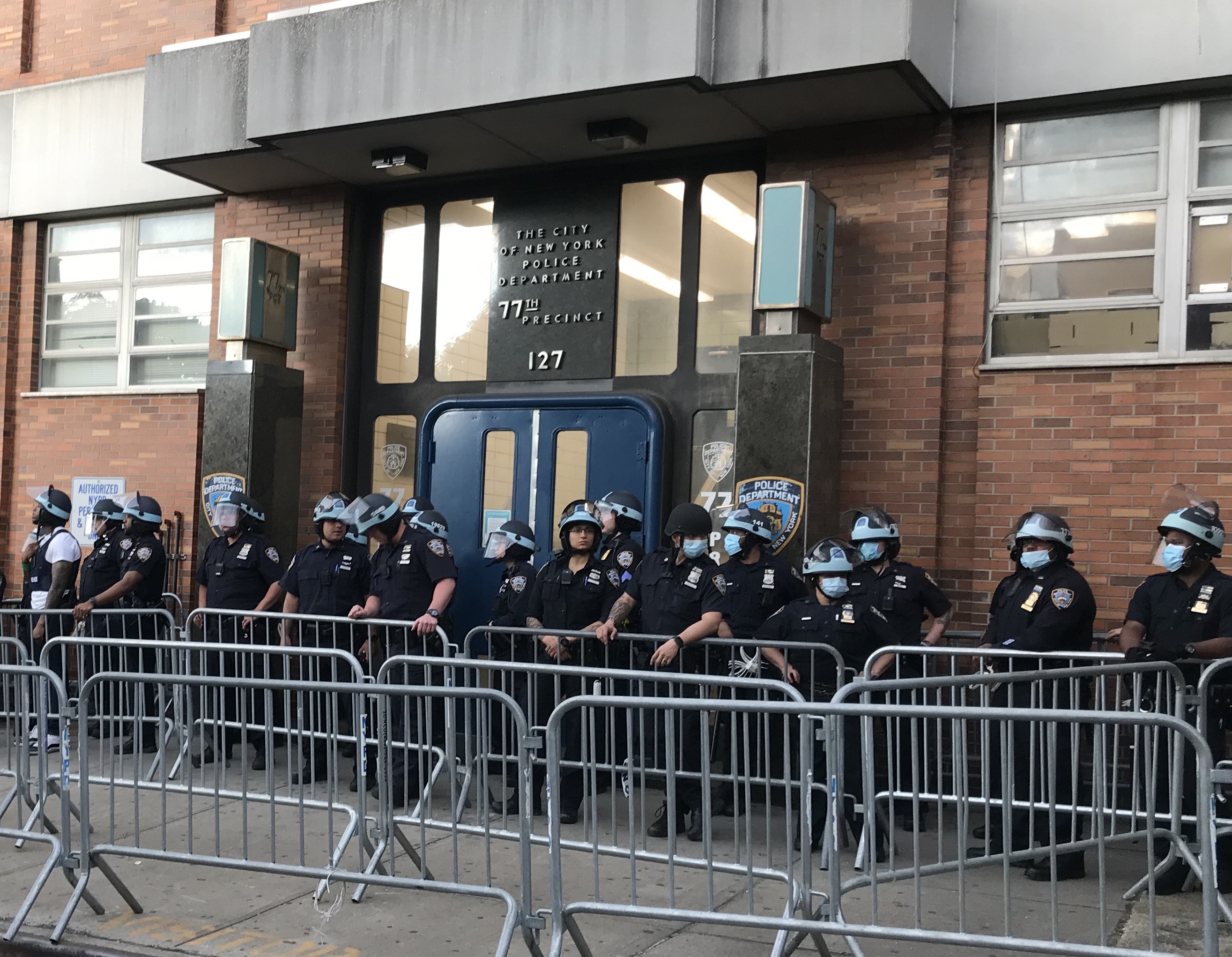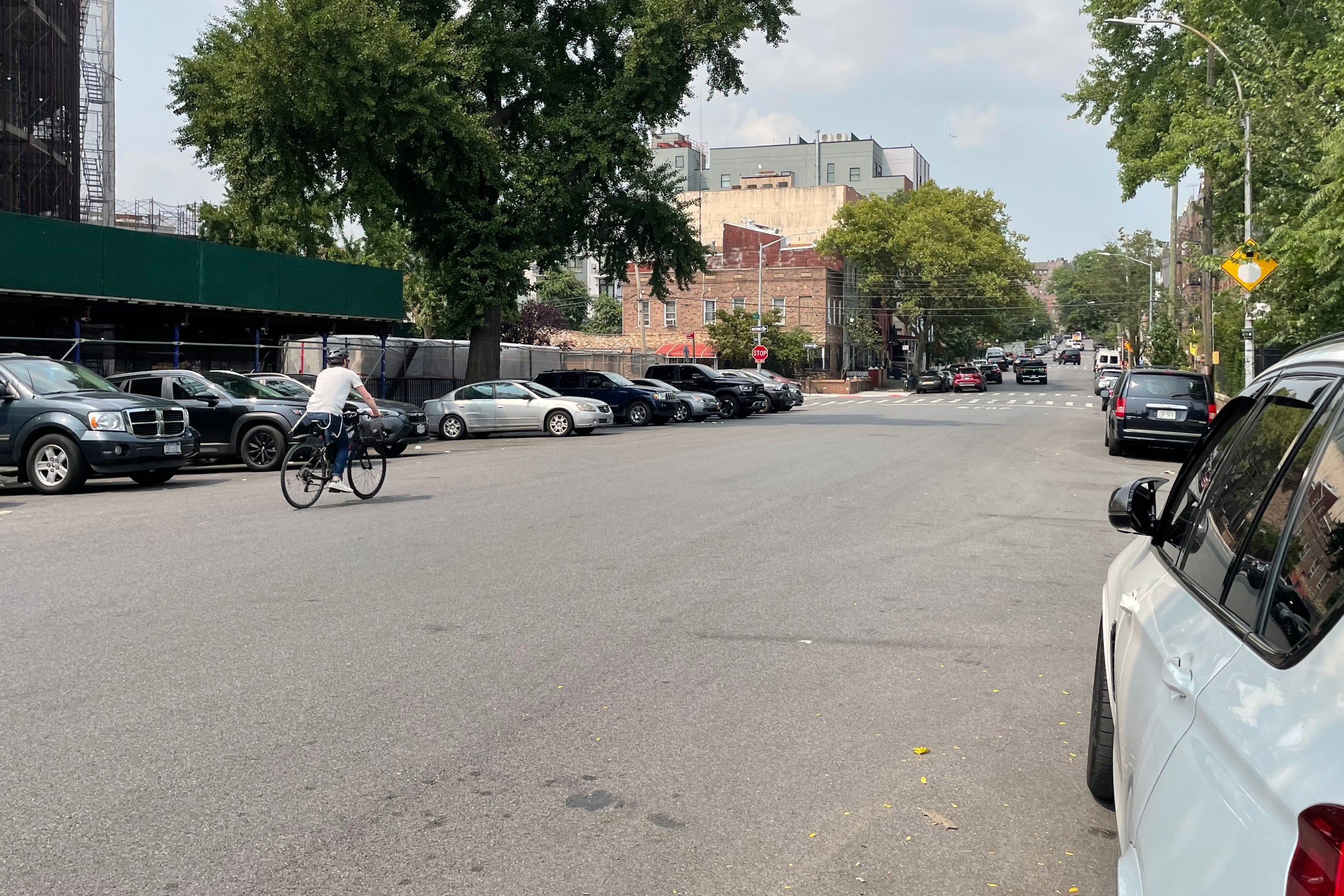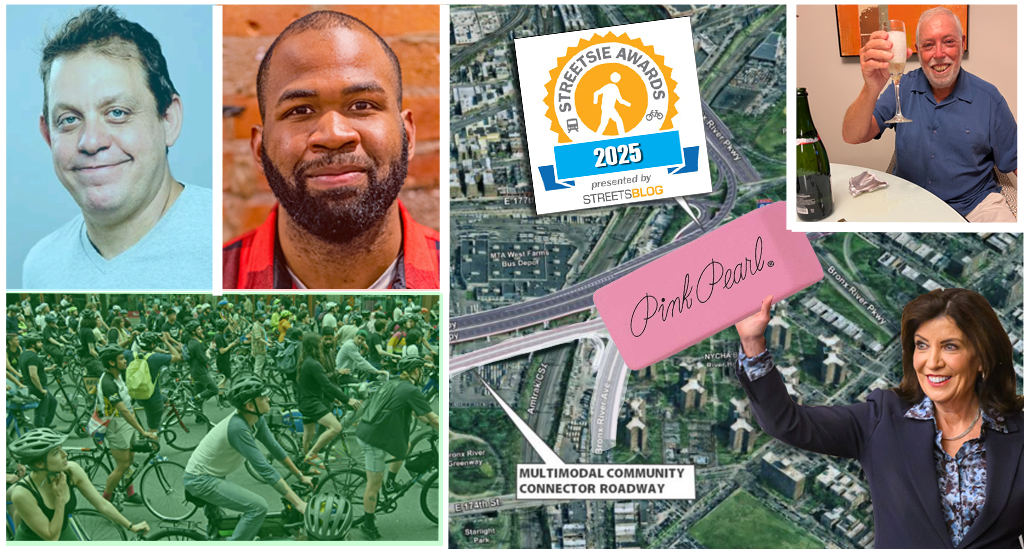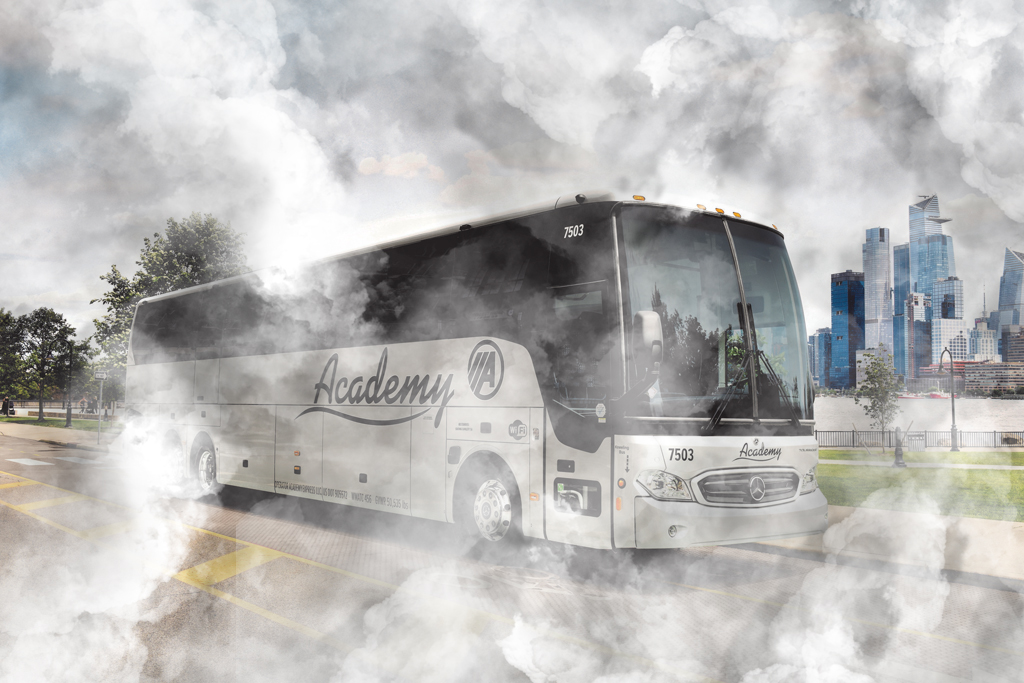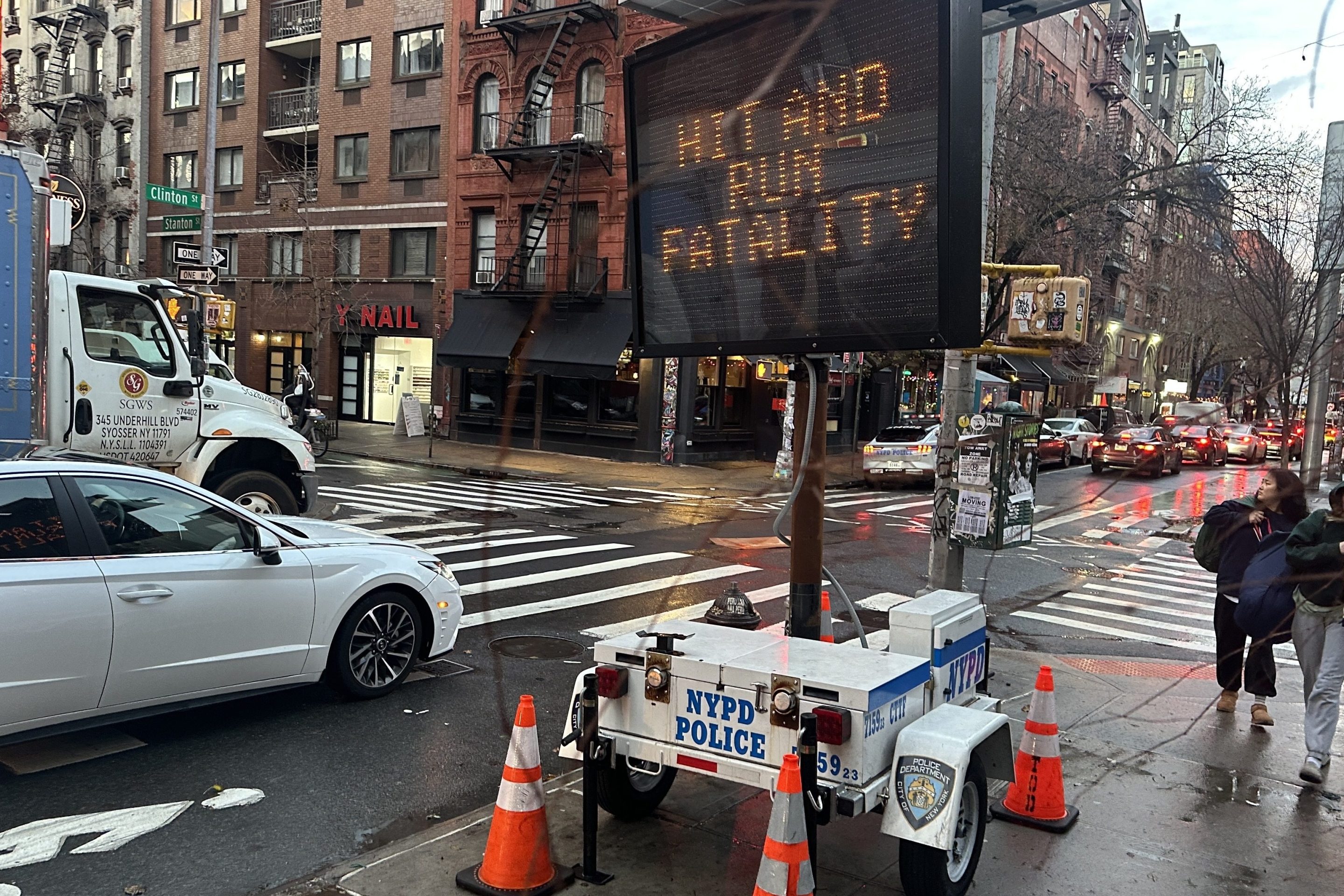Mayor de Blasio said on Tuesday that the NYPD is withdrawing from the scores of streets and sidewalks around station houses that it seized during recent Black Lives Matter protests — but New Yorkers are not seeing any pullback.
The street theft — which was done with any notice or permission of the Department of Transportation — has been in place since the beginning of the protests that erupted after the police murder of George Floyd in late May, but some had been put in even earlier in response to the COVID-19 emergency.
A Streetsblog investigation published on June 15 documented at least 18 precincts around the city with barricaded streets; the NYPD also commandeered at least two public parks — Carl Schurz Park, which abuts Gracie Mansion, and the Classon Playground in Brooklyn — for such fortifications during the recent protests.
But now cops are allegedly skedaddling, the mayor says.
“NYPD has been making adjustments over the last few weeks and reducing some of the precautions that were put in place previously and that's happening all over the city,” the mayor said during his daily briefing. “I can certainly say around Gracie Mansion, people have access to the water constantly. There are some particular times when there's protests and those measures are put in place temporarily. And certainly on the blocks where there's police precincts, there's been some temporary measures, but everything is being reduced as time goes by. Everything that's been done has been temporary.”
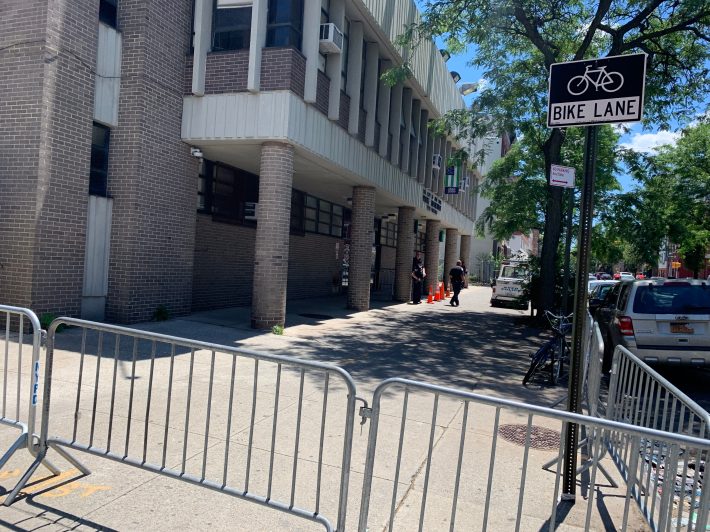
Really? Anecdotally, New Yorkers aren't seeing any signs of such reductions.
Politico reporter Erin Durkin, who asked the mayor about the fortifications on Tuesday morning, said during the briefing that she had gotten “a ton of complaints from people saying, you know, 'We can't get down blocks, we can't get to businesses, we have to show ID to get to our own homes.'”
No kidding. Durkin's tweet on the subject garnered more than 60 replies, in which dozens of New Yorkers noted that streets in their neighborhoods had been blocked by the cops for weeks, including at the following locations:
- Chambers Street near City Hall
- West Broadway, south of Canal
- Fifth Street near Second Avenue in the East Village
- 35th Street in Midtown
- 54th Street in Midtown
- Sixth Avenue between Bergen and Dean in Brooklyn
- Ericsson Place between Hudson and West Broadway in Tribeca
- 82nd Street between Amsterdam and Columbus on the Upper West Side
- 19th Street between Seventh and Eighth avenues in Chelsea and
- Union and Henry streets in Brooklyn.
No one reported the removal of any barricades on Durkin’s Twitter thread, which as of Tuesday afternoon had 204 retweets and comments and 642 “likes.”
De Blasio says he is "not familiar with the specifics" of precincts barricading off their blocks and will find out more about it...weeks after having been asked about it before and saying he would find out more about it.
— Erin Durkin (@erinmdurkin) August 3, 2020
In fact, Streetsblog can report definitively one location in the city from which the cops have retreated: the Classon Playground in Clinton Hill, from which the 88th Precinct withdrew in late June, under pressure from local residents (and after questions from Streetsblog). The cops had used it as a parking lot for weeks, saying they needed to protect their vehicles from vandals. (One mitigating factor in the cops' favor: The playground was closed to the public during the COVID crisis.)
After Streetsblog inquired with the Parks Department on June 25, the cops “vacated the area almost immediately,” said Samantha Fikilini, a local activist. “You can now find kids scootering, playing tag, people working out, lots of skateboarders and of course people utilizing the now free racquetball courts.”
Update:
Central Park West bike lane by Columbus Circle finally reopened late last week.
— Kevin Fagan (@Kevin_J_Fagan) August 5, 2020
Streetsblog asked the mayor’s press office for a list of the streets that the NYPD has vacated. We will update readers if we get an answer.
